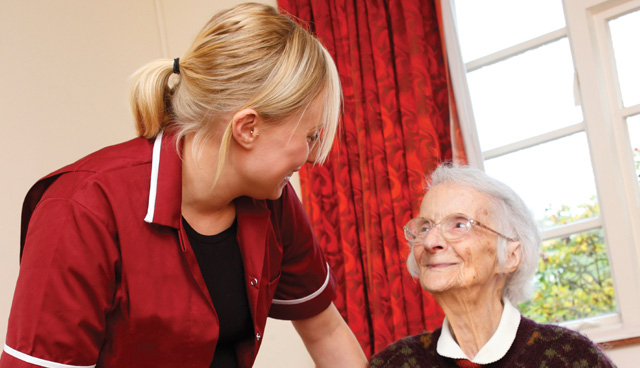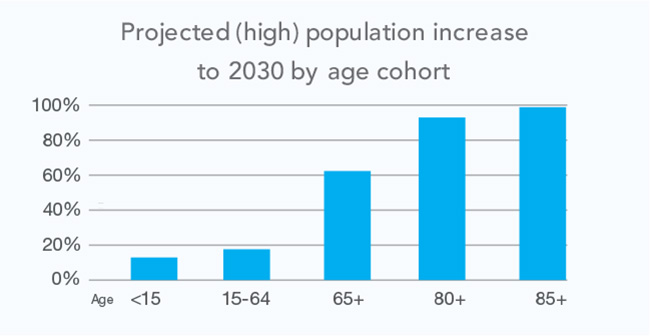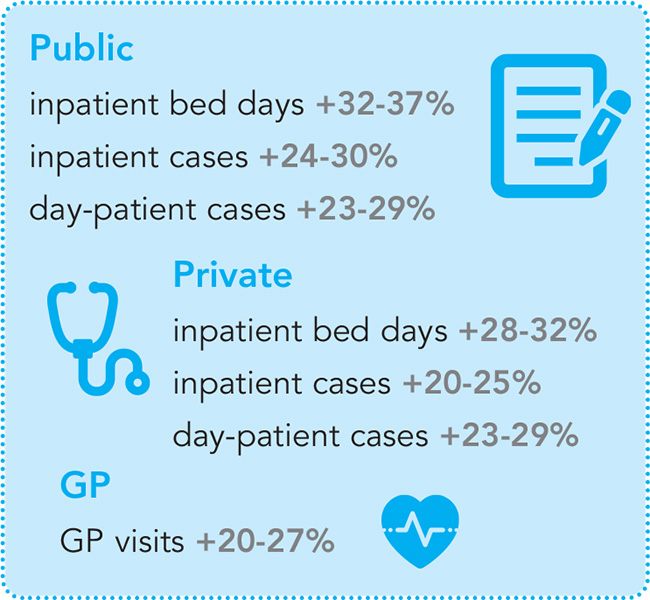Projected demand for healthcare


Ireland will be required to expand most forms of care to meet the needs of a rapidly growing and ageing population, a new report providing the most comprehensive mapping of public and private activity in the Irish healthcare system, has found.
Projections of Demand for Healthcare in Ireland, 2015-2030, is the first of its kind to be produced using the Hippocrates Model, a new ESRI projection for population growth and is the first projection published to be based on 2016 Census figures.
The report starkly highlights the need to enhance capacity across the healthcare system if Ireland is to keep up with the evolving demands up to 2030, but also illustrates the extent to which forms of care, particularity that required by older people, will experience a substantial increase in demand as life expectancy of the population increases.
Services for older people are set to inherit the sharpest increase in demand but there will be increase across all sectors. Home help care, residential and intermediate care places in nursing homes and other settings is projected to rise by up to 54 per cent. Demand for public hospital services is expected to rise by 37 per cent in relation to inpatient bed days and 30 per cent for inpatient cases. Demand for GP visits is projected to rise by 27 per cent.
Private hospital demand is also set to increase. In 2015, it is established that private hospitals delivered 15 per cent of total inpatient bed days and 27 per cent of total home help hours. However, projections to 2030 estimate a 32 per cent increase in demand for inpatient bed days and up to 25 per cent increase in inpatient admissions.
While the data presents a strong case for the need for additional expenditure, capital investment and expanded staffing to meet the demand, it also highlights the probability that projected population growth will also increase the number of people in employment, meaning a higher contribution to the national income and revenue base from which to fund healthcare.

To fully interpret the data to optimal value, the model by which the projections were arrived at needs to be understood. The Hippocrates model, developed by the ESRI in a programme of research funded by the Department of Health, is based on detailed analysis of the services used in Irish health and social care in 2015. Building on this data, new ESRI projections for population growth inform projected demand and detailed analysis of national and international evidence on trends in health and disability inform the development of preferred projections scenarios by sector, with modelling of alternative assumptions about healthy ageing, or the relationships of health and disability status to age. Evidence on unmet need and demand is also utilised.
The potential of the new model goes further than the immediate projections. The report states that the Hippocrates model is a tool which will: “Inform financial planning for the healthcare system; inform planning for capacity, services and staffing; and identify future demand pressures”. However, it also highlights the potential for analysing potential system changes and reforms, such as resourcing community care. It adds: “By incorporating demand in public and private systems, the model can examine policy questions such as the implications for the public hospital system if services were transferred from private hospitals or vice versa.”
As well as the demand for public and private hospital services and GP appointments the report also outlines projections in a number of other services, such as the demand for practice nurse visits, which is set to rise by between 26 to 32 per cent by 2030.
In the area of community pharmaceuticals and pharmacy service, demand for prescription items under public schemes could rise by up to 37 per cent by 2030, while the need for pharmacy consultations will rise from between 19 and 25 per cent.
Demand for long-term and intermediate care resident places could rise by as much as 54 per cent, the same percentage increase as is projected for bed days within this sector.
In 2015 there were 15,300 recorded home care packages across the health sector but the report highlights the potential for this to rise by between 44 to 66 per cent by 2030. Demand for home help hours are also set to dramatically increase, potentially between 38 to 54 per cent.

Finally, the report looks at the demand for public health nursing and community therapy services. It anticipates:
• public health nursing visits up 26 to 35 per cent;
• physiotherapy visits up 24 to 30 per cent;
• public occupational therapy visits up 33 to 38 per cent; and
• public speech and language therapy between -2 per cent to +16 per cent.
Commenting on the publishing of the report, Health Minister Simon Harris said: “I have long been of the view that we need to increase capacity in our health services, but that it must be done in an evidence-based manner. I welcome the publication of this report, and the development of the underlying projection model. My Department’s collaboration with the ESRI, and the work already underway on the bed capacity review, signifies our commitment to integrate relevant, high quality evidence into the fabric of our planning and decision making, so that we can create better health and social care services in the years and decades ahead.”
*Projections of Demand for Healthcare in Ireland, 2015-30: First Report Froom The Hippocrates Model. October 2017. The report was authored by Maev-Ann Wren, Conor Keegan, Brendan Walsh, Adele Bergin, James Eighan, Aoife Brick, Sheelah Connolly, Dorothy Watson, Joanne Banks.





